Introduction
I have done a couple of long trips before, like returning from Dakar, Senegal in our Piper Arrow with my friends. This time, I decided to do this trip to Oshkosh somewhere around New Year 2023 and I realised I did not have a lot of time left to prepare it. Also I decided to not to communicate too broadly around us because the probability that it would work out was not very high: anything could block: aircraft not OK, insurance too expensive, trip not feasible etc. So the first thing I did was making a list of things to do: I ended up with 87 action items and things to arrange or buy upfront …
The philosophy of this trip was:
- If we don’t get to our destination, it’s OK. We do it for the trip. Getting to Oshkosh is the cherry on the cake
- In terms of safety we want to have double of everything: engines, oxygen, glasses, communication, …
- We are limited in time due to other life restrictions
- All flying IFR in principle. We avoid icing in clouds (see reason below)
- We do the trip in summer so we have long days and the best weather. It turns out that good summer weather is not good enough to reliably cross Greenland
- We always plan for destination + alternate + reserve fuel and both the destination as well as the alternate should have avgas available so we don’t get stuck. This was one of the more difficult premises of this trip !
I want to leave a trace of this preparation in this blog so it can be used as help for people wanting to do a same endeavour, of course, all of it loaded with the proper disclaimers so nobody thinks that they can just do as we did and it would be ok… This post tries to bring a comprehensive overview for future transatlantic adventurers.
Me myself got inspired by the following people. I want to thank them for sharing their expertise willingly or unwillingly:
- Hans Vandenbossche, my CFII and mentor who had done this trip before and provided me with invaluable information on running a twin and planning for such trips
- Bart Vertenten, friend, ATO/FTO Manager at CAE and TRI who tought me respect for this trip !
- Micke Lang, the Youtuber from Diamond who did this route many times and also took Flight Chops along. I basically almost copied his ferry routing.
- Michael Fabry, a very experienced Belgian ferry pilot with who I have been conversing about getting avgas in Canada, and who advised for my routing.
- Guido Warnecke, a extremely experienced ferry pilot who double checked my routing and gave invaluable advise
- Youtubers JP Shulze (The Candourist), who we met at Oshkosh, FunforLouis and Matt Guthmiller who had done the eastbound transatlantic leg together in a Cessna 210 on their around-the-world trip: truely the first seed of inspiration for this trip. I saw their pictures at Far North Aviation in Wick (EGPC): see below.
- Swiss pilot Dan who did this crossing and much more with his RV7 and documented it on Euroga.org. I also corresponded with him on some Customs details: very helpful !
- And of course my friend Mark Cossement, who I mentored before and who mentored me now by showing how a transatlantic crossing is done and by supplying me a lot of info like checklist and distance tables ! We also kept each other company at Oshkosh with his friends and kids which made it a very pleasant experience as well.
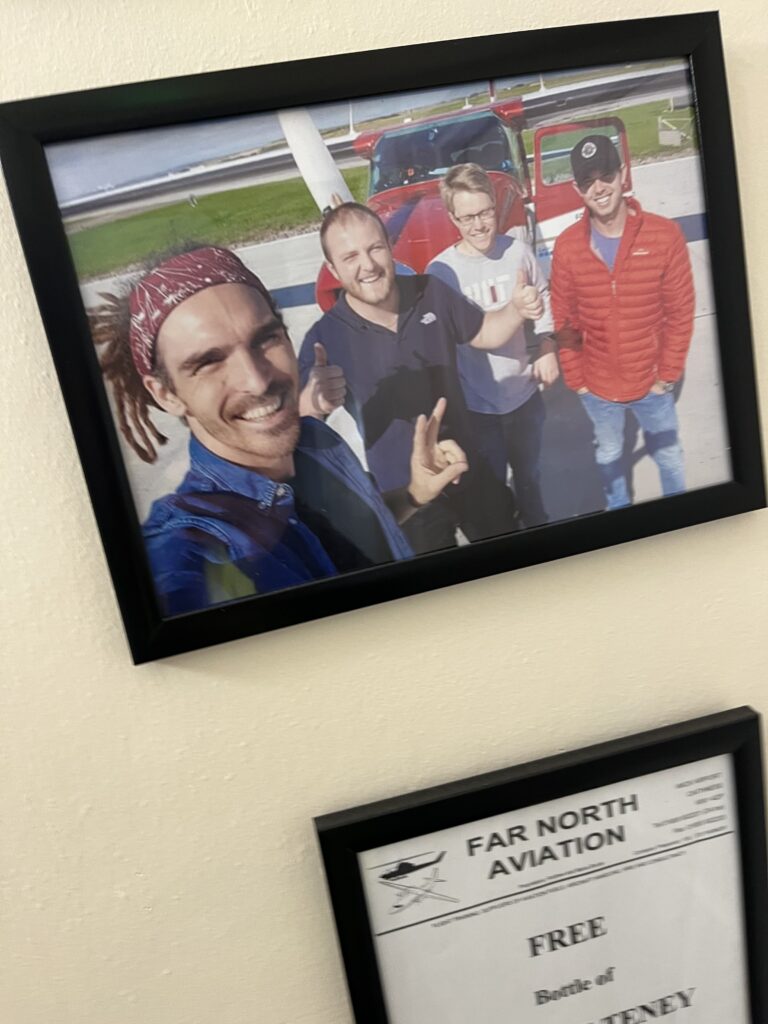
The Aircraft
The most important choice which wasn’t a choice at all, is with which aircraft to do this trip. As I own a 1981 Piper Seneca III, this became our choice obviously. This is a twin, equipped with two engines, two alternators, four fuel pumps etc … But having two of each also doubles the probability that something could go wrong. Other people argue that having two engines is extra dangerous as in a one-engine-out scenario at take-off, you have no options. I disagree: in the majority of time that you are exposed to engine failure (ie in cruise), you have ample altitude and ample time to react properly so doing this route with a twin definitely gave peace of mind: in case an engine failed, we could save ourselves and bring ourselves to an airport to land. The prospect of ending up ditching in the ice cold Atlantic Ocean was never an appealing thought. Would I do this trip in a single engine piston aircraft? Probably not, and definitely not with my son on board.
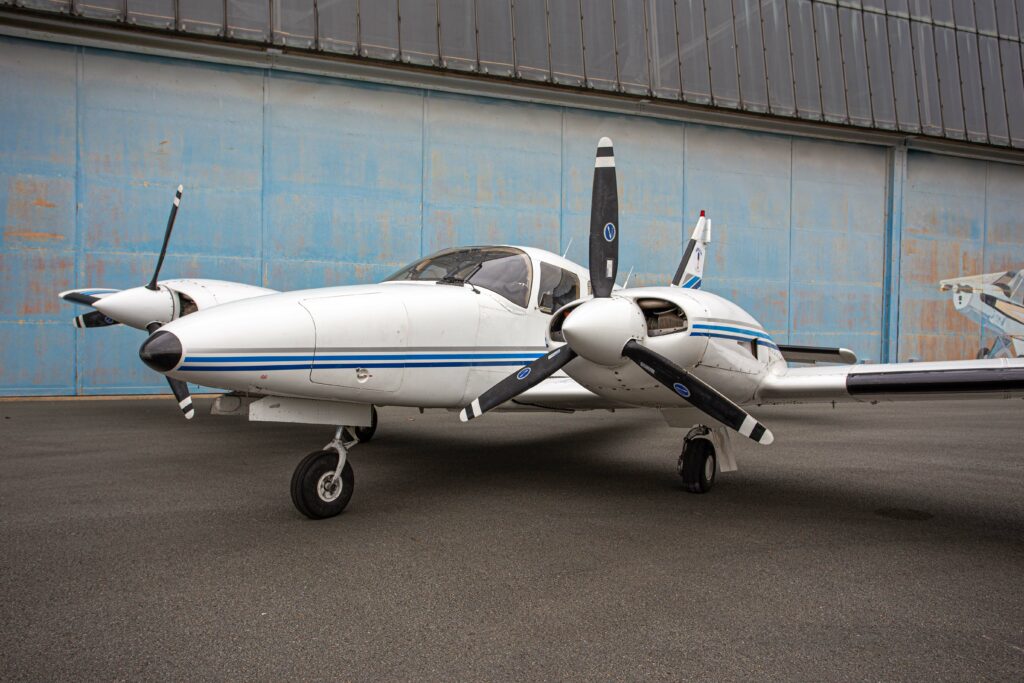
So the choice of aircraft was quickly made: the one I already had. Leaves me with ensuring that all systems onboard were working. It turned out that there were quite some concerns:
First of all, if you want to fly in the USA, you must have an ADS-B-Out capable system onboard, which I hadn’t, so I had Lambert Aircraft upgrade my Garmin GTX330 to a GTX330-ES with Extended Squitter which satisfied the ADS-B Out requirement. I had them also repair a failing alternator, do the bi-annual pitot-static check and some smaller stuff. They also gave me the tip to handle the Jeppesen databases in flight as when flying from Greenland to Canada, you have to switch the Europe database into the Americas database (and reverse) while flying and those memory cards only hold 1 database for the Garmin GNS430W navigators.
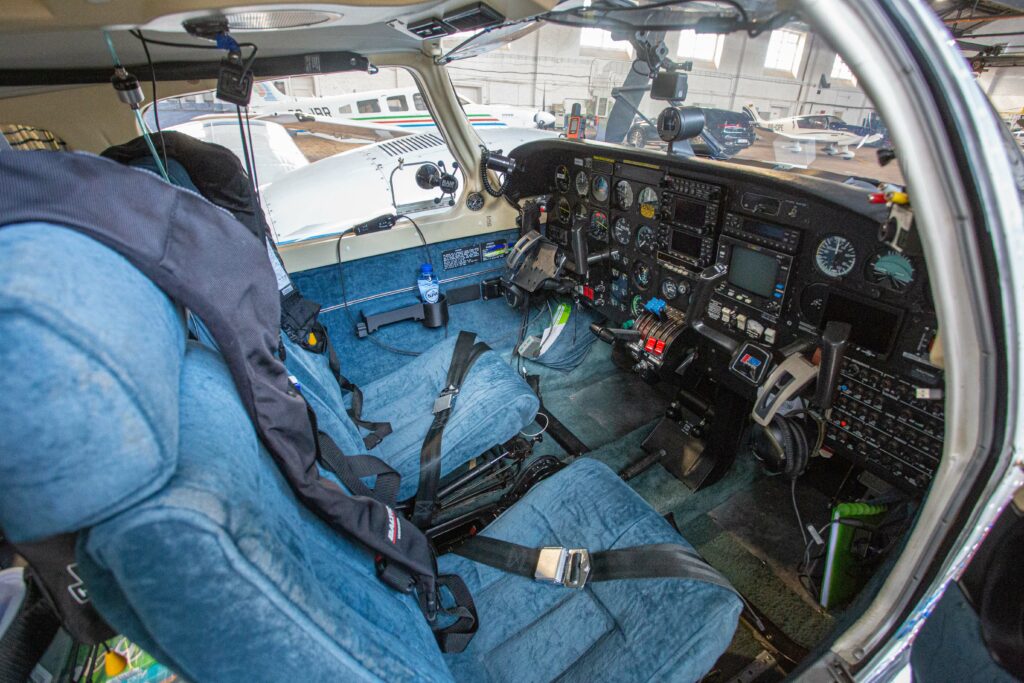
Range and performance were one of the major issues for this flight. I decided not to fly with extra fuel tanks and do this trip on the existing fuel capacity of 123 Gallons. Not sure if I would do that again but it did work out. On performance, I gradually enhanced the performance parameters in Foreflight of my machine, fine-tuning the fuel consumption, and speeds in various configurations and power choices: taxi, climb, cruise and descent; and I had a normal cruise speed setting of 62% calculated and tested and a economy setting of 47%. In previous years I had also a JPI EDM790 engine monitor and fuel calculator installed, and I upgraded the engines with GAMIjectors so I could gently fly Lean-Of-Peak according to the Mike Busch method, a method that I highly recommend. The stock engines had previously been upgraded with intercoolers. Combining this with engine monitor and GAMIjectors gave me a fuel burn of 2x 10,2 GpH at 62% at full MTOW and ISA +9°, and a TAS of 176 KTAS at 18’000 ft: not bad for a 42 year old airplane. At 47% I can reduce to 2x 8,4 GpH still yielding a TAS of 161 KTAS at 18’000 ft, giving me an acceptable range including reserves. So I tested and refined the performance model diligently in Foreflight, giving us an peace of mind.
I also decided to not put additional fuel tanks in the airplane because according to my calculations, and following the Blue Spruce Routes, I could do it without. Also I was already closing in on my maximum take-off weight so there was basically no headroom.
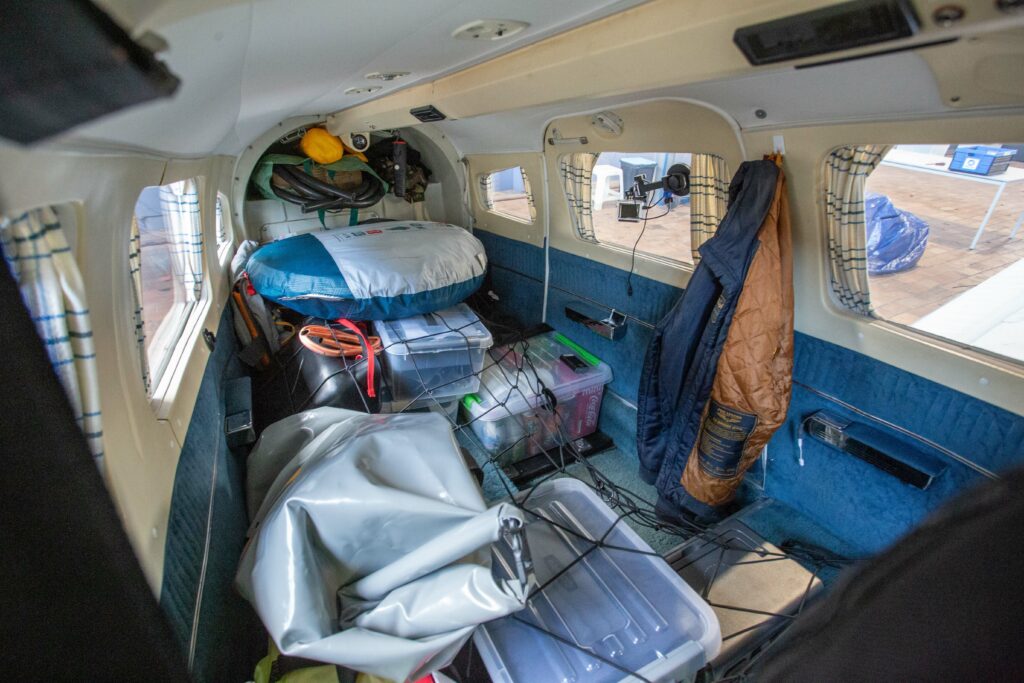
Talking about weight, I meticulously weighed every item on board and listed it in my Weight & Balance and I avoided lying to myself about weight.
Also I didn’t bother with putting in a HF radio, but I did carry a satellite phone and a Garmin InReach which proved to be extremely valuable. NO HF radio meant that I was committed to the Blue Spruce Routes and that I would have to fly at FL250 IFR between Goose Bay and Narsarsuaq … which I ended up up NOT doing.
We knew we had to do an oil change as I normally have the oil changed every 30 hrs approximately, so we brought everything to set up an oil change: spare oil, tube and can. We would not go as far as changing the oil filters. And it all worked out fine as planned.
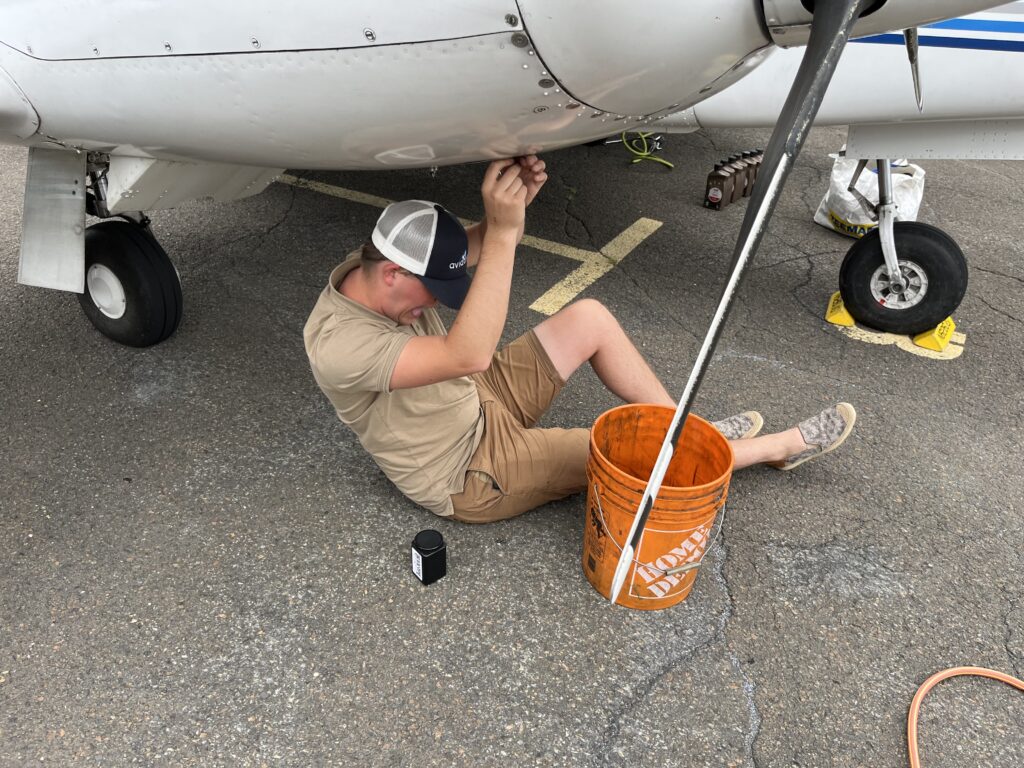
Then there is the topic of oxygen … this airplane is at its best at FL180 (18’000ft): engines are running fine with wide-open-throttles, air is thin and true airspeeds are great. Also, you are mostly flying above weather and it’s cold enough to not have icing. A human needs supplemental oxygen at that level, so this plane is equipped with an oxygen tank. I connect a Mountain High O2D2 system to it to optimise the usage of that oxygen tank. The backup of the mountain high system is the legacy oxygen masks but they consume more oxygen. As a backup of the onboard system I also brought a portable bottle filled to the brim. And in order to be able to independently refill the oxygen? I also brought a full bottle and the hose to refill … which it turned out we had to do two times !
One month before the trip, Qualiflight , our trusted mechanic, did the annual inspection and the 100hrs maintenance. Apart from two or three minor issues that I could live with, it turned out that one major problem could no be solved: the deflate valve for the de-icing boots leaked and they could not get inflated completely. We rushed in another valve but that leaked too so at the end I had to make a decision: either cancel the trip or avoid icing at all cost. I decided for the last and I had to accept that we had to avoid icing at all cost.
The Copilot
Initially I considered doing the trip with an experienced pilot who had flown that route before. I also considered doing it with flying friends, but at the end I decided to invite my son along for the trip: we know each other well enough to not to bother each other too much in the high stress situations of this adventure. It was the best choice I have made: he helped me preparing, planning, calculating, fuelling, repairing, flying, we kept each other sane and safe.
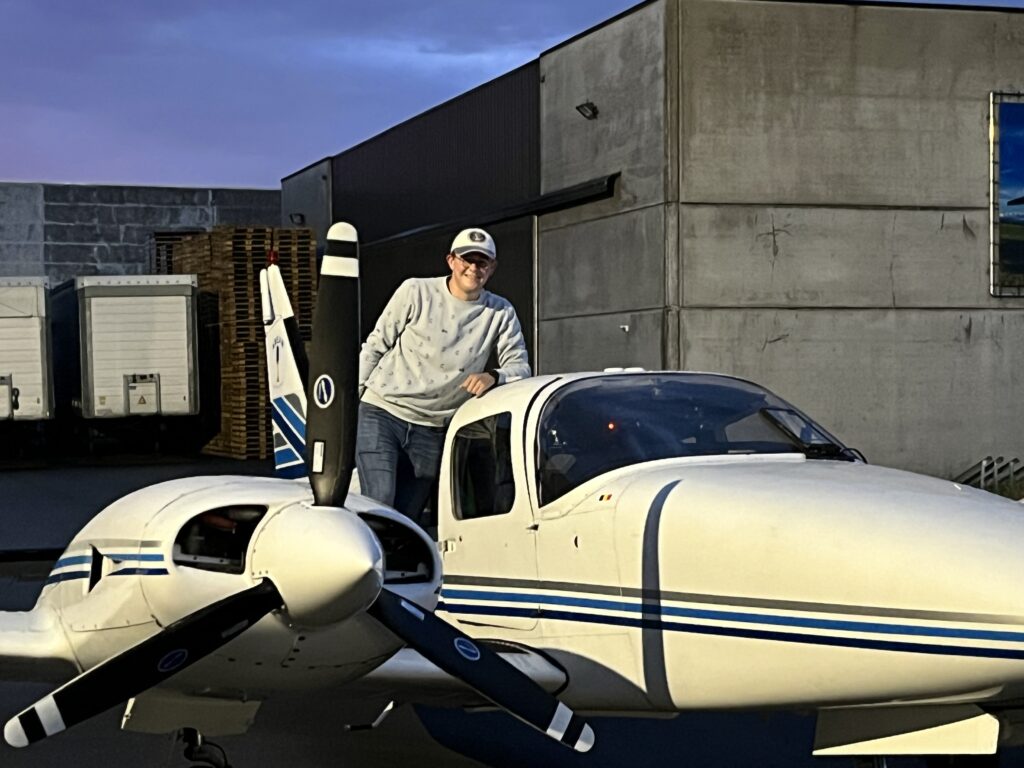
Also I spent a couple of hours flying with him on a single engine Cherokee and also on the Seneca: flying, landing, touch and goes etc so that he would be able to land the Seneca in case something would go wrong with me in one of the flights. Luckily we were never in this situation but it was good preparation anyhow.
The Route & Navigation
The first reference I had for the route is the very comprehensive ICAO NAT DOC 007 manual describing the procedures of crossing the North Atlantic ocean in aircraft. I agree that it is mostly written for airliners operating in the NAT airspace but some sections are more generic and describe the usage of the Blue Spruce Routes, specifically if you fly without HF radio.
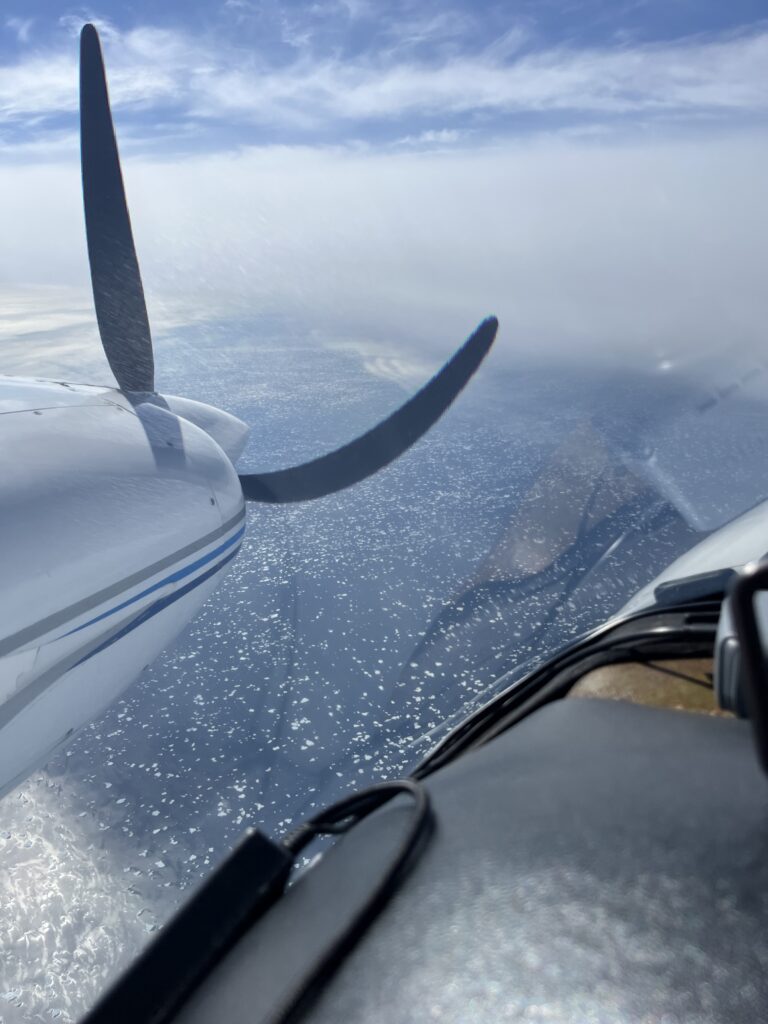
This 2004 FAA publication also passed our preparation: “North Atlantic International General Aviation Operations Manual”, and it contains this interesting sentence:
It is extremely unlikely that you will be able to conduct a flight across the Atlantic and remain in visual meteorological conditions (VMC) for the entire flight. Go back and READ THE UNDERLINED SENTENCE AGAIN!
The Blue Spruce Routes are basically air routes designed by the US Air Force to ferry their war birds from the US to Europe in WW2. These routes minimize the time over the Atlantic Ocean and offer reasonably short routes for the war birds with limited range. As seen from Europe to Canada they go as follows:
- Wick, Schotland (EGPC)
- Reykjavik, Iceland (BIRK)
- Kulusuk, Greenland (BGKK)
- Kangerlussuaq, Greenland (BGSF), formerly known as Sondrestrom or even Bluie West 8
- Iqaluit, Canada (CYFB) formerly known as Frobisher Bay
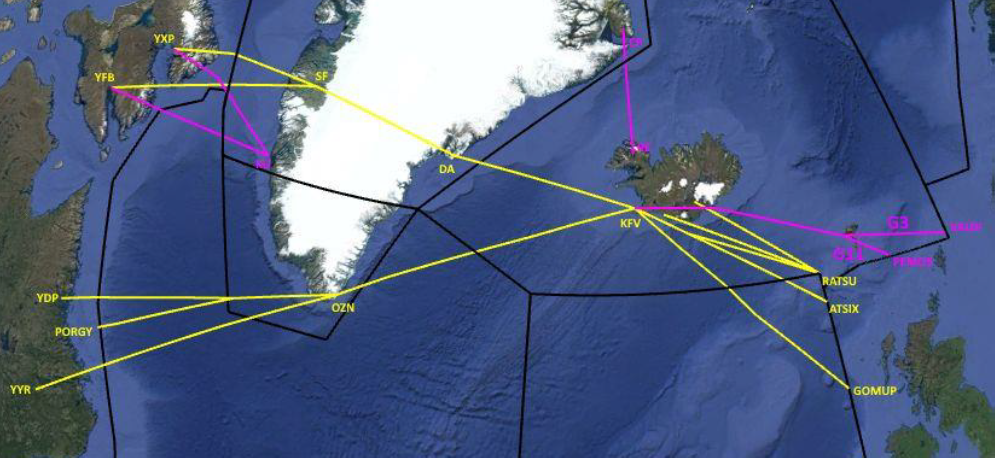
There is also a more southern Blue Spruce Route: Reykjavik (BIRK ) – Narsarsuaq (BGBW) in southern Greenland – Goose Bay (CYYR) in Canada, and originally I had planned to fly this route in the return. However apart from offering a slightly shorter route and no icecap to climb above, there are three problems connected to this route: (1) the over-water stretches are long, (2) there was no reachable avgas alternative near Narsarsuaq as Paamiut (BGPT) had no avgas available, (3) Canada enforces the rule to fly at or above FL250 IFR over oceanic airspace without HF radio: they basically don’t give you a IFR clearance below FL250.
I also bought the Jeppesen North Atlantic plotting charts to have a good overview, and to have papercharts on board.
I checked the intended route with multiple mentors mentioned above to check the (in)sanity of my plans.
Foreflight offered all en-route charts and approach charts for Iceland, Greenland, Canada and the US. I printed out all approach charts that I likely would need as a destination and/or alternate in case I would have problems with my iPad containing the Foreflight app ànd with my iPhone which contained the Foreflight back-up. So I was triple covered for charts.
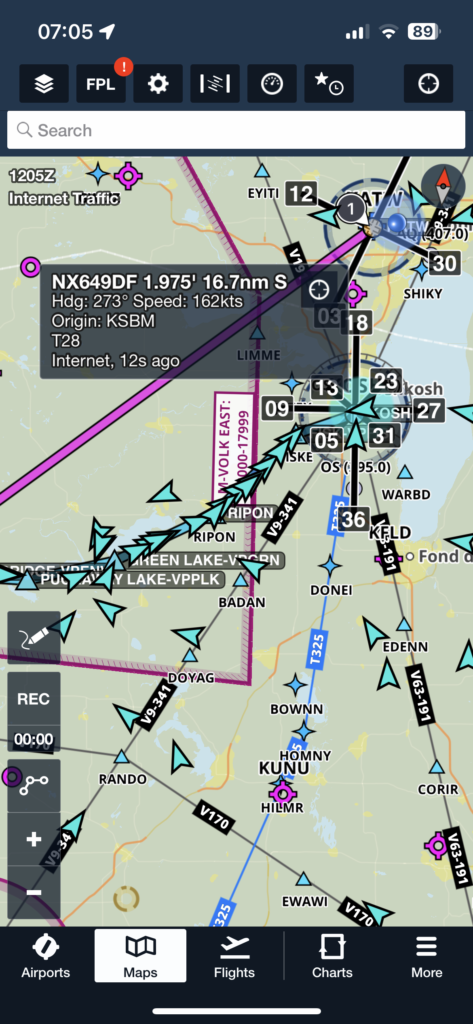
Over Iceland, I flew VFR using the very trusted SkyDemon app: always been the best for VFR flying in Europe. It was also helpful in planning our terrain clearance in Greenland as it was almost the only way to get some info on the mountain peaks in west Greenland.
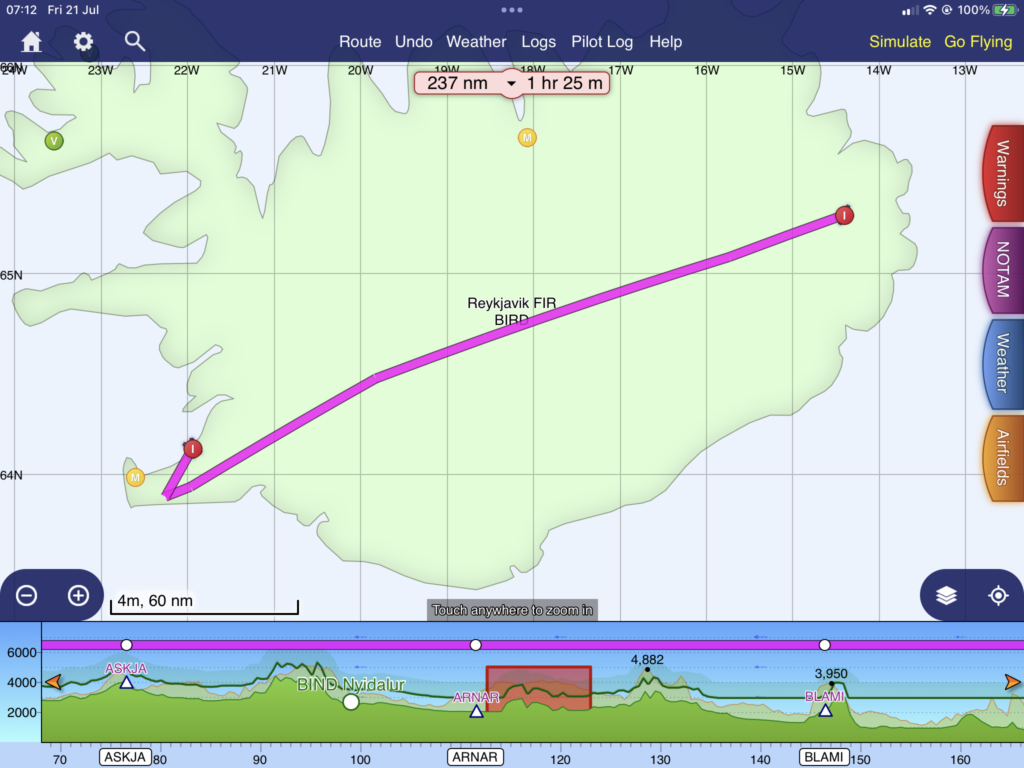
The route planning learned us the three major challenges of this trip:
- Headwinds ! Going west is getting headwinds. And they were almost always wrongly forecast (too little forecast). This put a limitation on range and forced us mostly to fly at 47% power in order to safe fuel
- The Icecap over Greenland ! The permanent icecap goes up to 10’000 ft high and stretches hours and hours. The minimal safety altitude over the icecap in IFR is FL120. Yes, you need oxygen, but the biggest problem is almost permanent icing at that altitude: either you are lucky and there no clouds, hence no icing; or you go above the icing but that requires your to climb and/or descend through icing which is a severe challenge
- Finding airports in range which serve avgas ! Our bird is thirsty on avgas, a specific fuel used on piston airplanes of a much higher octane grade than kerosene (called Jet A1). Jet A1 can be found everywhere. Avgas (called 100LL) is more difficult to find and more expensive. So I called all airports along the route upfront. Greenland was difficult in terms of avgas, but northern Canada turned out to be very difficult! Few airports there sell avgas, and when they do, they sell one barrel (205l) at the time at a very high price. So you have to plan to need exactly 205l when you land there: not enough space in the tank means you leave precious fuel behind; not enough to reach your next destination + alternate means you are stuck or you take higher risks. On top, some airfields have no means to pump the avgas into the airplane, so you have to carry your own manual fuel pump, which we did.
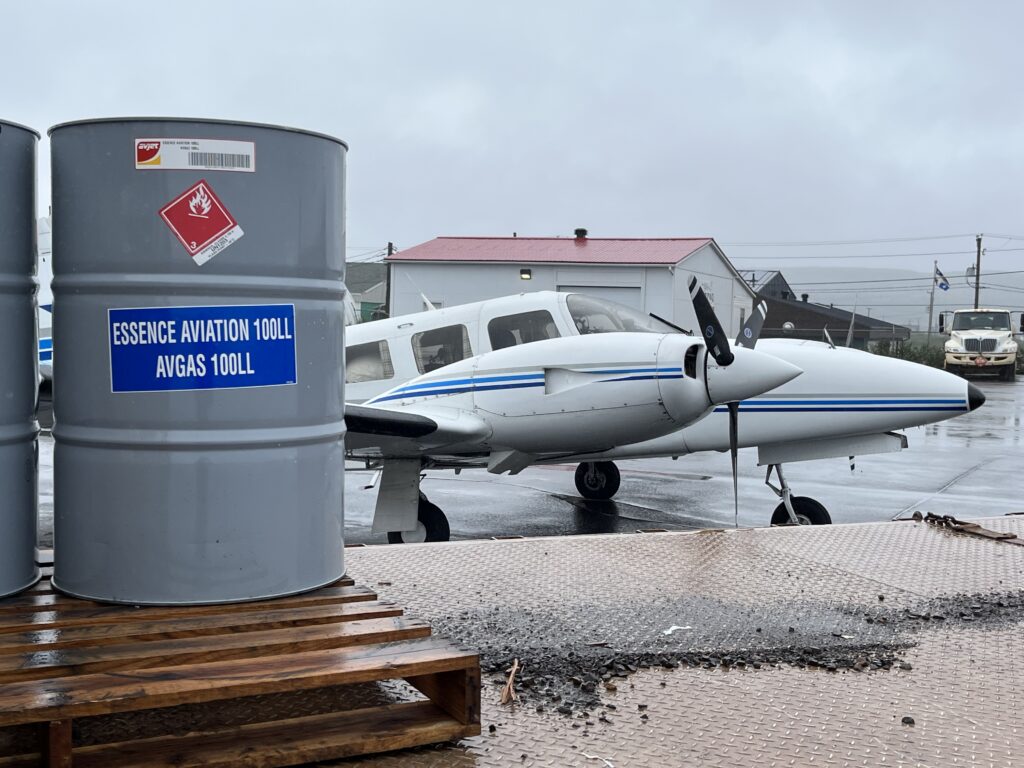
It turned out that no amount of planning would allow us to stick to it: all our plans changed the first day. However, having thoroughly planned allowed us that type of flexibility.
Paperwork & Procedures
Flight-wise and aircraft-wise there are not really any major paperwork issues to contend with … except:
- Insurance: I had to buy additional insurance to fly this twin for two weeks in Canada and the USA. Although I feared that this would be very difficult and expensive to obtain, it turned out very easy and cheap to obtain from my insurance agent … easy-peasy !
- As we cannot enter the USA as Belgians on an ESTA because we don’t come in the USA with an airliner, both of us had to obtain a B1/B2 US visum. As I already had one, we need to get one for my son and that took time, effort, money and one simple appointment at the US Embassy in Brussels.
- Equally for the Canada, we needed a simple electronic visum (“ETA”) which was easy to obtain online and dirt cheap. Note that as we are not US or Canadian citizens, the CANPASS or ARRIVECAN process does not apply for us: we had to call upfront to a number, pass all our details and than we were good to enter Canada. Note that for Canada, I assigned both my son and me as crew, and we were given a transit visum on the spot. Entering Canada can only happen in a designated port of entry (ie International airport): Iqaluit (CYFB) and Frederickton (CYFC) we chose
- For the airplane to enter the USA, we had to buy a decal upfront a DTOPS. They send it to your foreign address and it needs to stick on the airplane before arrival on US soil.
- So for us and the aircraft to enter and leave the USA, you have to make a EAPIS account and submit all info timely. Note that I submitted me as crew and my son as passenger as per CBP officer I spoke to. For entering the US, you can only do this in a designated port of entry which is open. First we thought to enter via New York state but later we switched to Appleton, WI near Oshkosh where we met the most friendly CBP officer ever!
- For entering and leaving the UK, you need to submit the Online GAR form
- For leaving or entering Belgium from/to outside the Shengen zone, a GenDec needs to be submitted upfront (which I forgot on the return flight …)
- For none of the countries visited (Belgium, UK, Iceland, Greenland, Canada, USA), a overflight permit is required. Belgium, Iceland and Greenland were painless to enter
- We also printed some empty GenDec forms beasue you never know… and they actually came in handy.
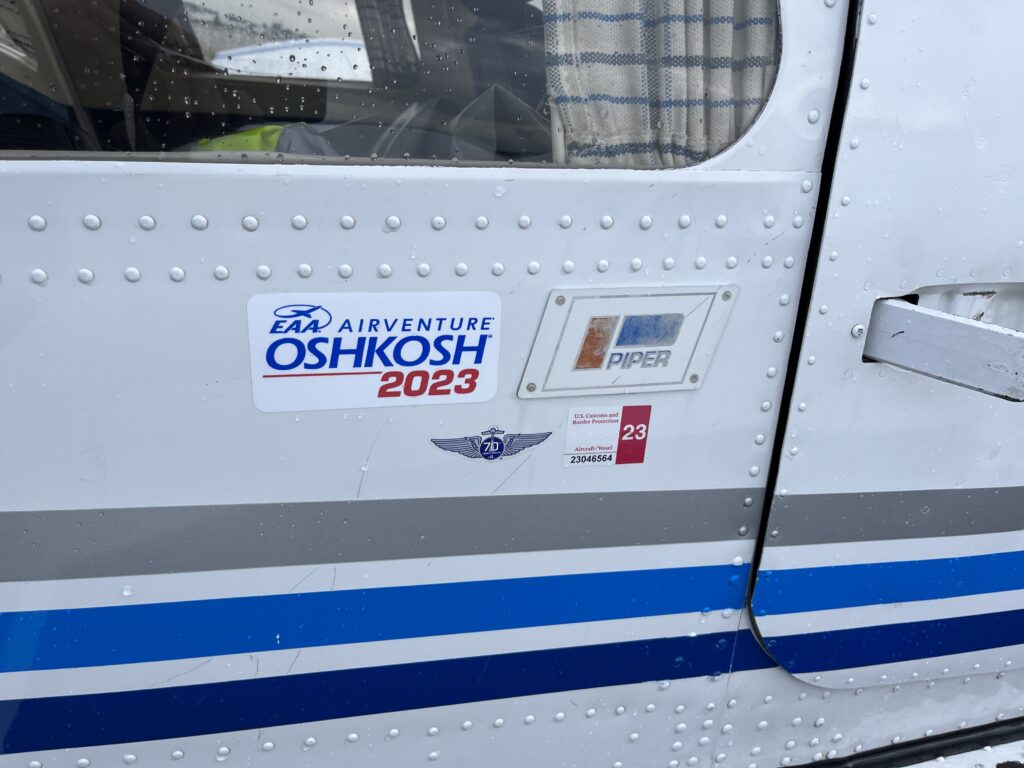
Food, Drinks & Energy
We brought four types of food and drinks:
- Snacks to nibble on during the flights. Water. Coffee we refreshed where we could every morning
- Regular food like sandwiches, meat and cheese for lunches which we kept cold in a portable fridge, powered by an external Bluetti battery. Sodas, water…
- Camping food that we could use during our camping part. Think of sausages, cornflakes, milk, and … 6 Belgian beers: Lachouffe: we were weight limited, remember
- Emergency supplies which I kept in a watertight bag with high energy food and water, in case we had to ditch or make an off-field landing somewhere.
In terms of power, we were well prepared: plenty of USB batteries and cables to charge our phones, iPad, GoPro cameras. As indicated above, I also caried a Bluetti power station that could power anything 240V AC or 5V DC.
EAA Airventure , aka Oshkosh
To be honest, I did not prepare a lot for Oshkosh itself. Of course, I read, printed and studied the Notice on how to get there and leave, and I watched countless youtube videos on the Fisk arrival.
Also, the whole camping experience got well prepared (see below).
I made myself an EAA member so I could camp there and get discounts on the entry fees.
And I made some vague appointments with friends that I knew of suspected that they would be there.
But other than that, because we were not sure that we would get there, I did not put a lot of time into preparing for the Oshkosh experience itself. And it turned out that this was not really needed …. and the positive surprise there was overwhelming and fun !
Camping
Because of the weight limitation, we planned for a rather basic camping experience:
- Two person simple tent
- Sleeping bags, pillows, air mattresses
- Gas stove with pots and pans and utensils
- Coffee making set
- Basic food and drinks
- Portable fridge and power station
- Two portable chairs
- no table … we just used plastic crates
And I brought a small Belgian flag to proudly show where we came from !
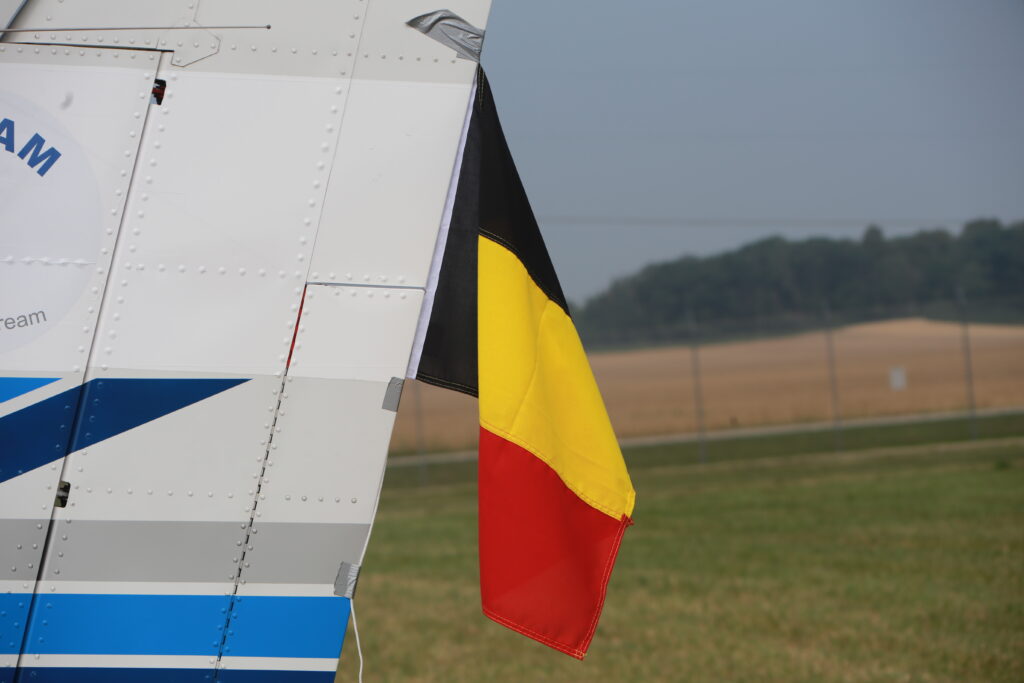
EAA requires to have an airplane tie-down in place when you park in Oshkosh. It seems that a lot of people bought “the Claw” for this, but I bought some very sturdy tent anchors and some good cords and I am pretty sure my airplane was very well secured. And when experiencing the Wisconsin thurderstorms, it gets very clear why you should secure your aircraft !
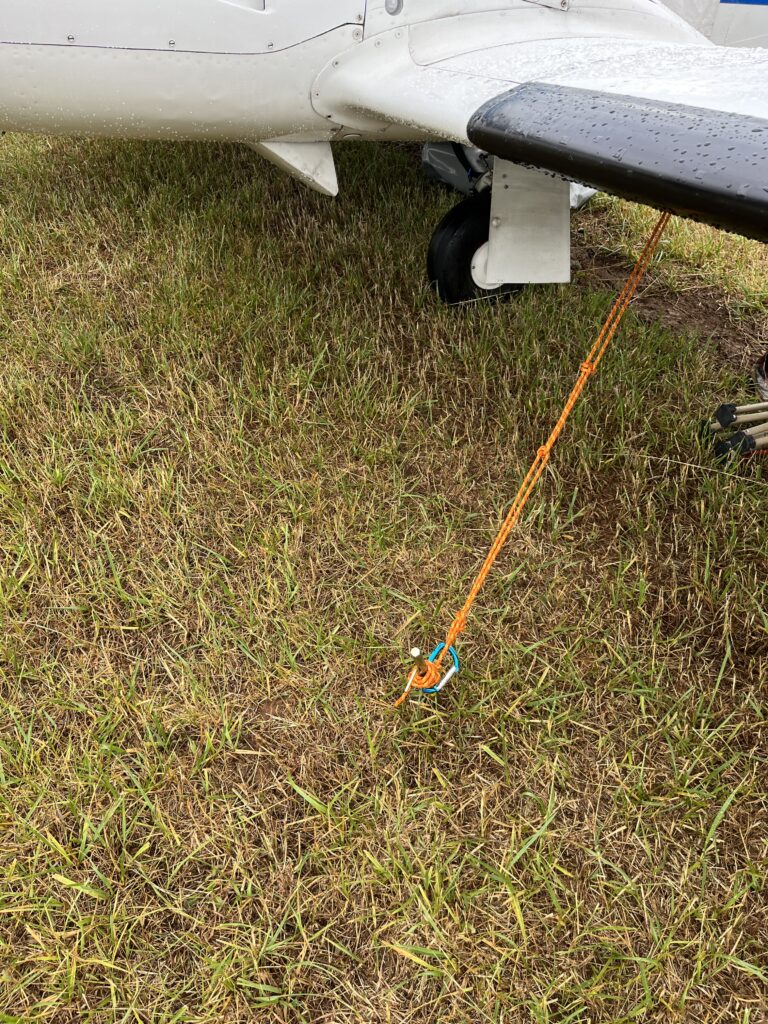
Communication Tools
Given the risks of this trip, we focused on emergency communication equipment.
Of course we had our cellphones with us (and European mobile roaming works up till Greenland), we had two VHF radios built-in in the airplane (both 8.3 kHz and 25 kHz compatible).
I also (as always) carry a spare VHF transceiver and its 240V charger.
The most valuable tool was the Garmin InReach Mini 2 which allowed us to communicate with friends and loved ones when out of cellphone coverage. It also leaves a trail of breadcrumbs every ten minutes so people could follow where we went. I had bought a data package with unlimited messaging for ease of mind. It really was pleasant to know that we had contact at all times. And the SOS function also gave peace of mind.
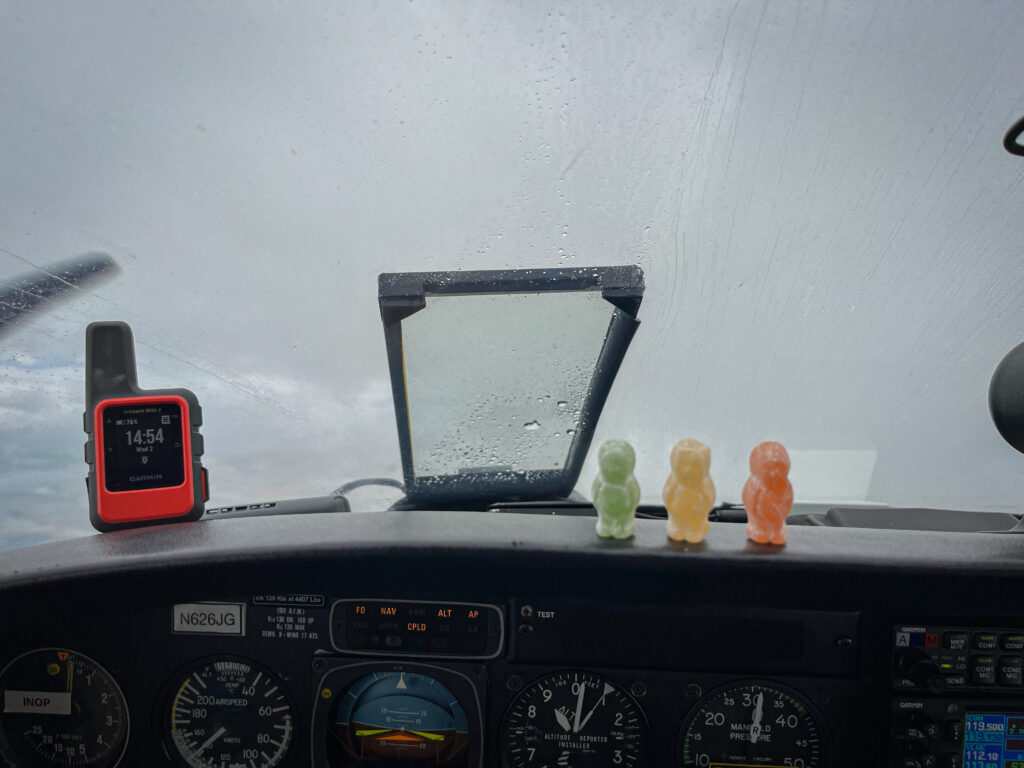
We also used it extensively to get quick METAR and TAF information by sending simple messages to “inreach@morrwx.com” and waiting for the automated reply: fantastic little tool !!
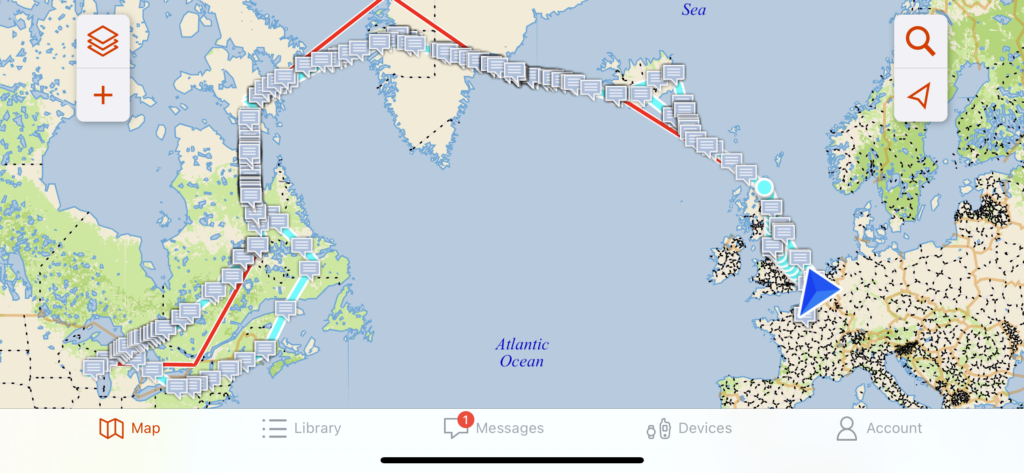
For a long time, I carry the invaluable ADL Golze 140 portable transceiver tool that allows European pilot to access weather information in flight through the Iridium satellite network for a small fee: it is really the only way to access reliably storm, cloud and wind information when not in cellphone coverage, or when flying too high for it. Sebastian also gives extremely good and fast customer support, so I highly recommend his solution for the serious European pilot.
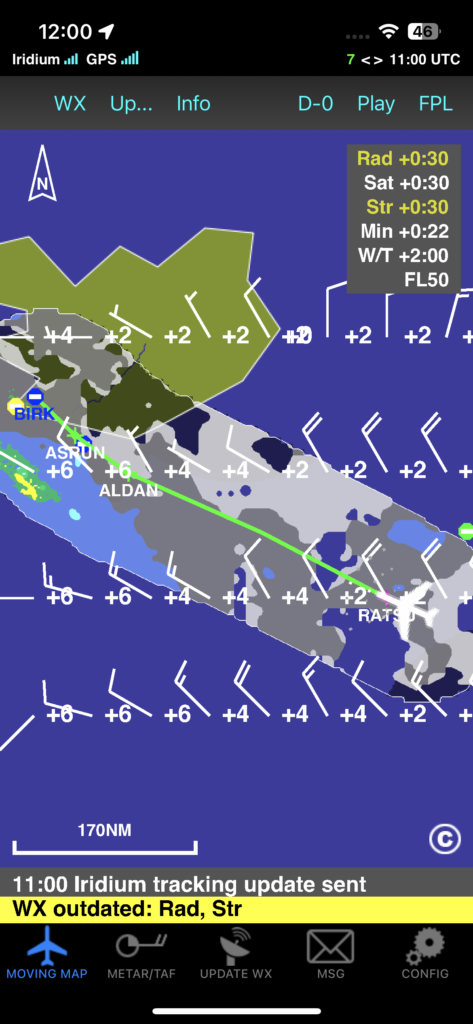
And finally, because I opted not to carry a HF radio with me, a decent alternative is having a satellite phone. So I carried an Iridium GO with me loaded with voice and SMS minutes. Although I did not really use it during the trip, I did exchange my Iridium phone number twice with Iceland Radio in case we would loose VHF contact. Also, I pasted that number in every flight plan I submitted as you never know when they would want to contact me when in air. And of course, I did test it extensively beforehand, both on the ground and in the air.
Next to those above, the airplane is also equipped with an ELT (Emergency Locator Transmitter), and we carried a PLB (Personal Locator Beacon) with us. When over water, I carried the PLB around my neck.
Weather Strategy & Tactics
Weather is the most critical part of this journey. The problem is its inpredictability and particularly it changing nature over Greenland.
So the strategic planning happened in Foreflight, using “average historical winds” which turned out to be pretty deceiving. Yes these winds give you a certain idea of how much headwind (typically going west) or tailwind (typically going east) you could expect, and it was sorta correct, but it was not entirely useful to base your detailed fuel calculation on these historic winds. So as soon as the true forecast window in Foreflight (typically 7 days in advance) came by, I had to recalculate a lot of details. And the winds kept changing. and the forecasts were sometimes significantly wrong even when they were 1 hour old.So that’s where the tactics came into play. My favourite tool is the GRAMET forecast on Autorouter: this forecast gives you a pretty good idea of the weather on your specific route at your specific time. I used it a lot and it was nearly always good ! And it worked everywhere ! I paid specific attention to the greenly-indicated icing zones.
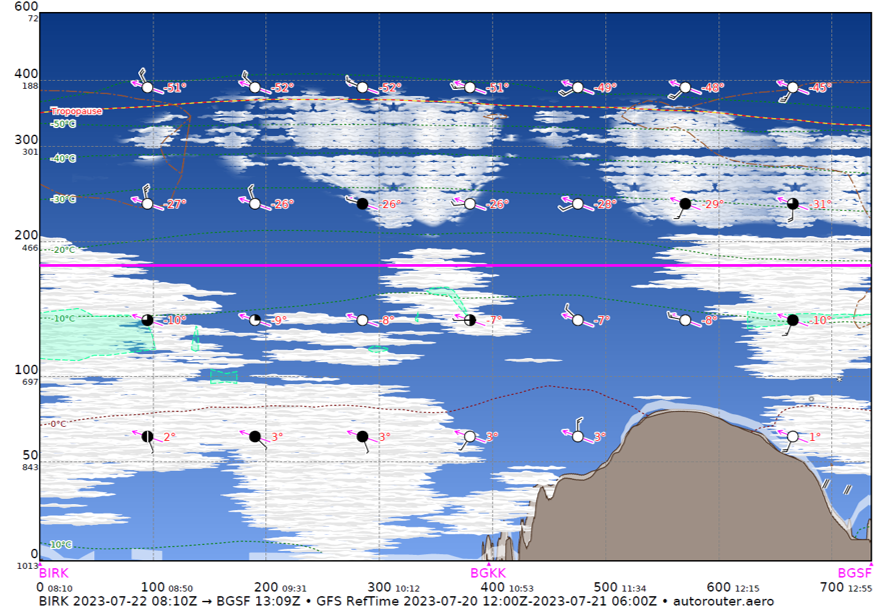
The Foreflight briefing forecast was often way too conservative on icing to my taste.
I also find Windy not very easy to use and not entirely comprehensive despite I paid the Premium option.
As indicated above, in Europe (up to and including Iceland), I can only recommend using the Golze system for tactical weather. It also integrates nicely with both Skydemon as well as Foreflight.
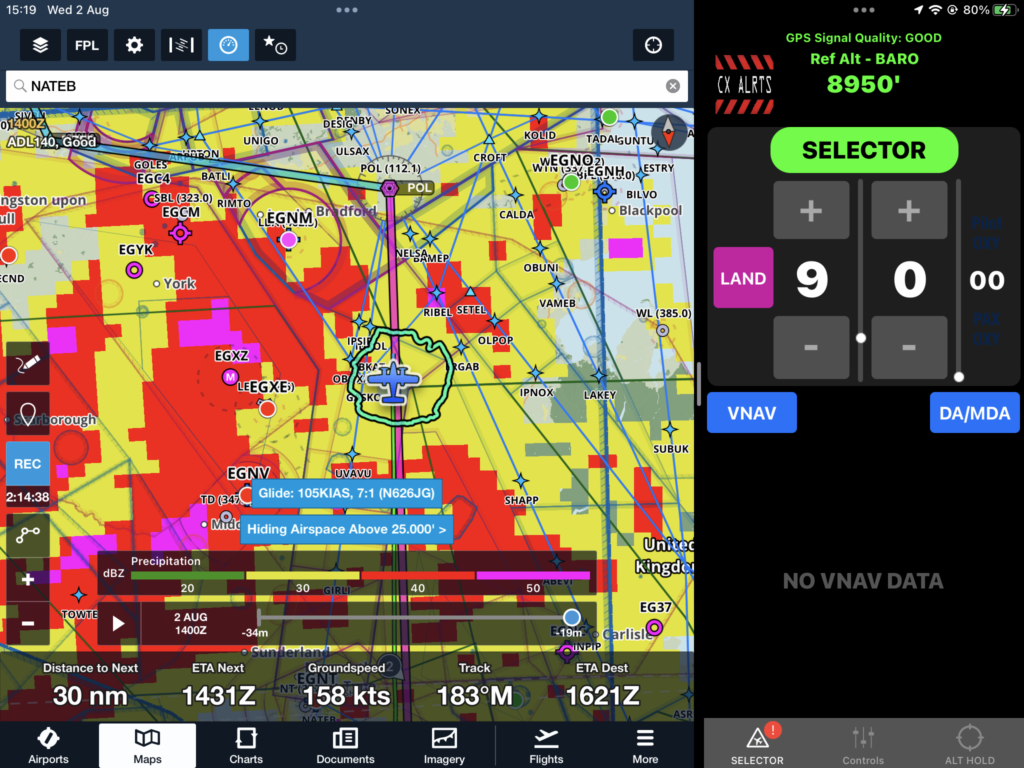
For METARs and TAFs, I used the messaging service on the Garmin InReach from “inreach@morrwx.com”: invaluable.
And finally, I was very pleased with the forecaster-to-pilot telephone support given by the Greenland Weather service in Nuuk to attack the Greenland challenge: I called them 3 to 4 times and their forecast was good and humble: when it was uncertain, they told us !
Emergency & Survival Tools
Finally when doing such a trip across the Atlantic Ocean, safety is a big concern and a big source of stress. So I decided early on to reduce this stress as much as possible and try to have double safety systems in place wherever or whenever feasible.
- 4 to 6 persons liferaft, freshly serviced and tested
- Oxygen for flight above 10’000 ft, including back-up bottle, and extra spare bottle and charging tubes
- PLB, ELT and InReach emergency communication devices
- Watertight emergency bag containing emergency food and drinks, a Canada approved emergency kit “Crashkit 27“, and flares, smoke bombs and fire arrows. That bad and the life raft were immediately available behind the co-pilot seat and we practised the getting out.
- Immersion suits rented with Far North Aviation in Wick, Schotland. I had agreed with them that we would keep the suits with us the whole flight as opposed to ferry pilots who typically drop it off in Goose Bay. We carried them halfway our body for every water crossing: it kept us hot and sweaty.
- Life vests in case we did not use the immersion suits as those float by themselves
- Extra medical kit
- 2 people who could operate the airplane (my son has no license yet but in emergency he could fly the thing)
- Mosquito nets, head nets and DEET mosquito repellent
- Printed charts & maps
- Spare VHF transmitter & charger
- SatPhone with a printed out phone umber list for ground stations serving the North Atlantic
- On-board urinating kit consisting of soda bottles with a large opening 😉
- Spare blankets if the heater would fail
- Spare oil and oil refresh set
- Manual fuel pump and strainer
- Tool kit for emergency repairs: served us well, including duct tape, steelwire, WD40
- Hammer, survival knife
- Camping gear that could double as emergency housing
- All official paperwork printed our in double and stored at a second location (passports, visa, airplane paperwork, …)
- Umbrellas and rain gear, sun cream
- Large amounts of cash: euro, Canadian dollar, US dollar. Credit cards adapted for North America.
So this is a comprehensive overview of our trip preparation: 9 months of work condensed into one blog.
The next blogpost is about Day 1: our departure from Kortrijk, stopover in Wick, a small in-flight emergency, our first crossing over the Atlantic, resulting in a diversion to Egilstaddir, topped off with a VFR trip to Reykjavik.
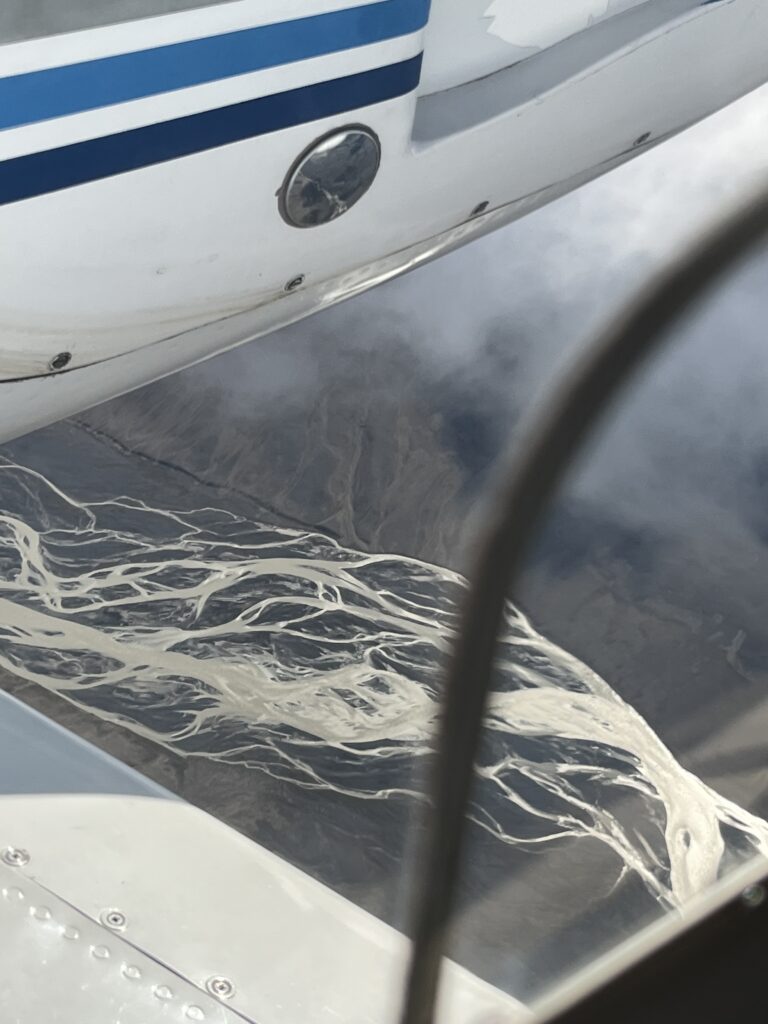
Stay tuned !
All reactions are welcome here.


Really enjoy reading about the prep of the trip. As somebody who has flown well over a 100 Atlantic crossings in airliners, doing it in a GA aircraft is still on the bucket list… maybe one day. Looking forward to the next blog posts! Congrats again on completing the trip!
Excelente relato de una gran aventura!! Gracias por compartirlo.
Esperamos con impaciencia la próxima publicación.
Hello, I’m very interested in your trip. I have also my own Seneca, 1976 and have the same idea, to bring back my Seneca to the country of origin. I’m staying tuned for your story here. Crossed fingers. Have a nice day. Milan DURICA
We spoke at Sohkosh – your textmessage with your contact details did not arrive
please contact me via my e-mail and some photo’s take at Oshkosh will arrive
Hey Bob, yes of course!
I’ll send you an email
Steven
Was great meeting you guys at Oshkosh! Man! Cheers, Sjoerd Jan
Was great meeting you guys at Oshkosh! Cheers, Sjoerd Jan
Equally so !
Let’s meet again !